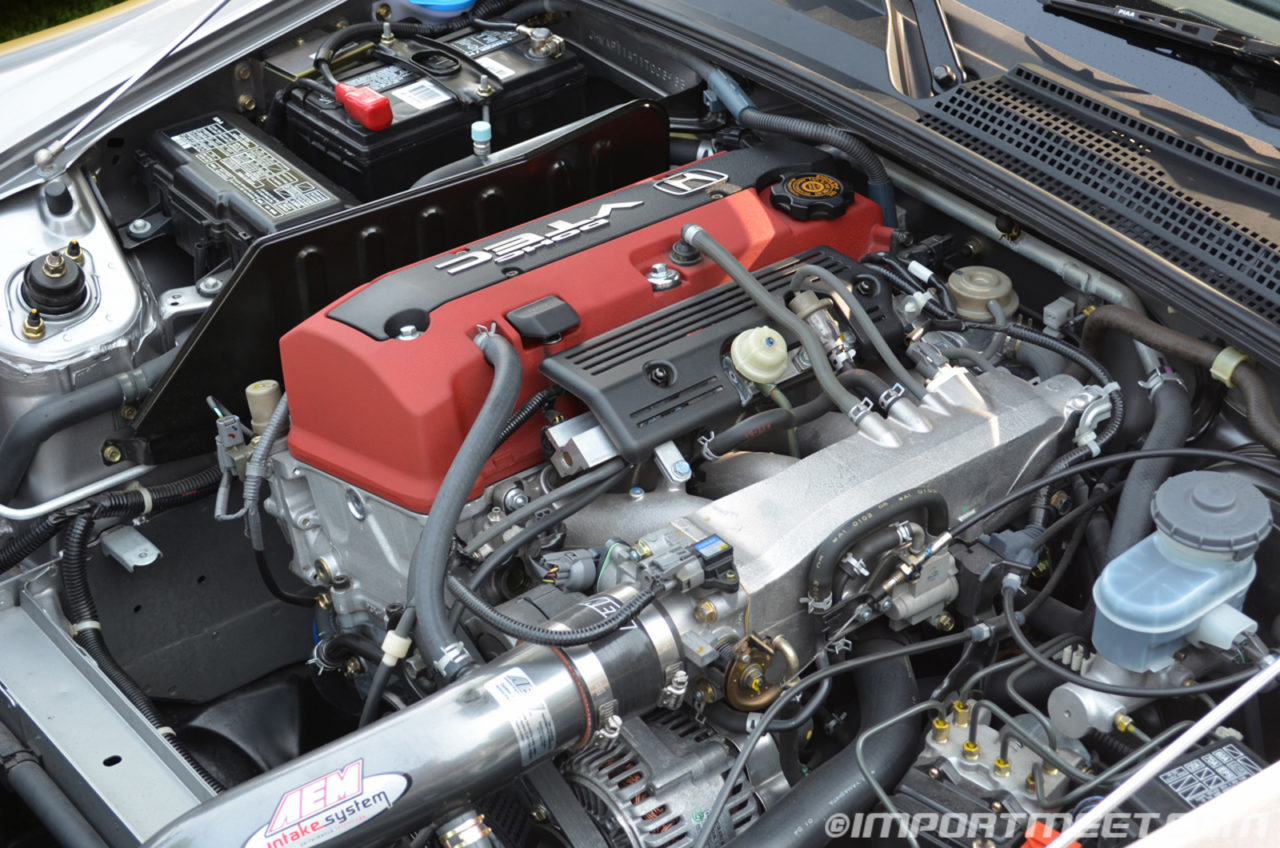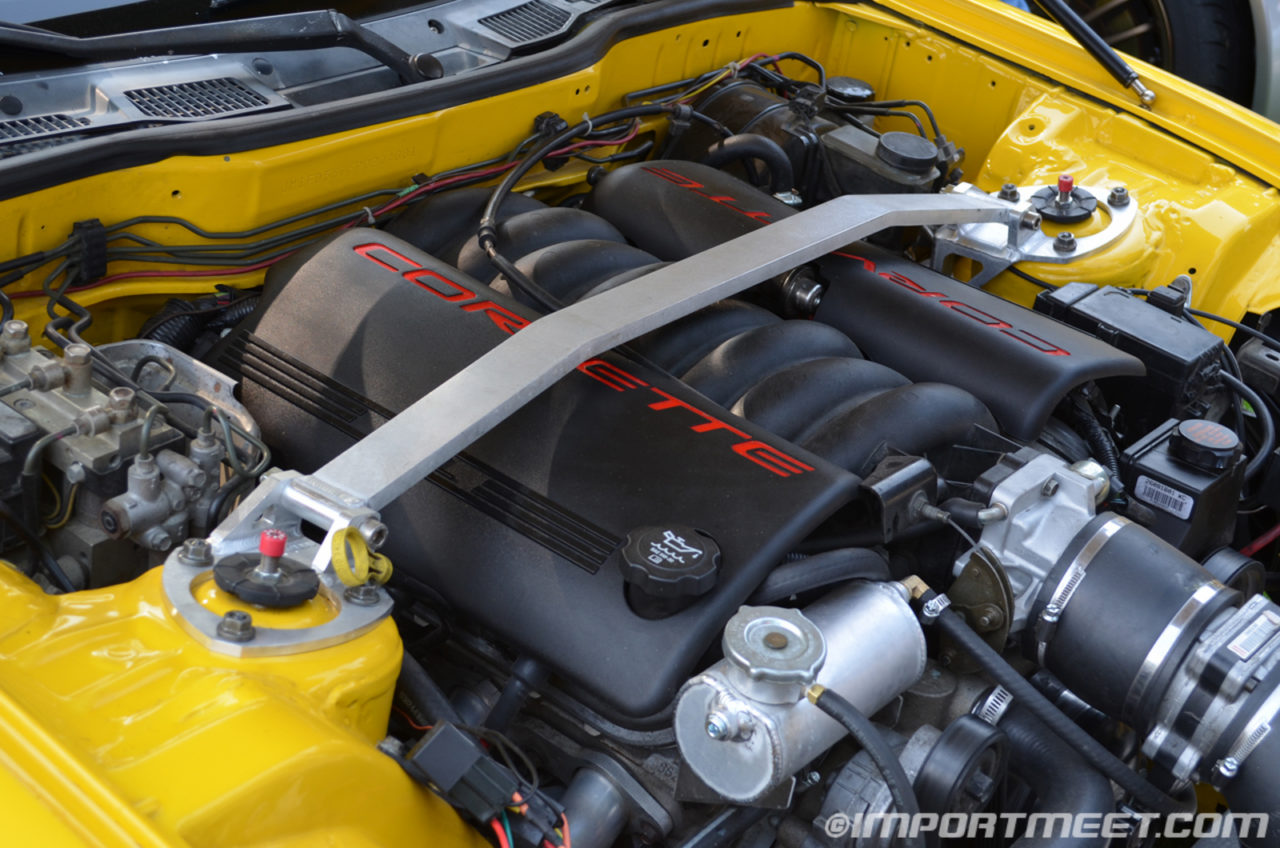When I was considering building an RX-7, I knew that the future powerplant would be a piston engine. While I can appreciate a nicely built rotary, they tend to have reliability issues when they’re abused. The intent with this track car was to build something that could perform well in autocross, drag racing, and drifting events reliably. All three of these forms of competition require that the drivetrain be able to take abuse and be fixed for a reasonable cost when it does break. In my opinion, to be competitive the car needs to be making at least 350-400 horsepower. Since RX-7’s have such a large engine bay and transmission tunnel, they can accommodate just about any RWD drivetrain available. In this article, I’m going to outline some of the options I am considering and the pros and cons of each. For each option I throw out ballpark estimates of cost. You may have seen them cheaper, but these are the prices I’ve seen when searching the Internet.
 1. 2JZ-GTE (Toyota Supra/Aristo)
1. 2JZ-GTE (Toyota Supra/Aristo)
Pros: One of the most respected engines in the import world. The 2JZ-GTE’s have the potential of making nearly 1000 horsepower on the stock bottom end. Since the block is cast iron, it can also take the abuse of autocross, drag racing, and drifting. Many online engine importers sell the long block from an Aristo with the ECU and harness for around $2000. Add a R154 transmission (5 speed from a MKIII Supra) with the correct bell housing for another $1500 and you have a base cost of over $3500 for the engine and transmission. Add wiring, a clutch/flywheel, custom mounts/driveshaft and the total is well over $5000 (to be fair, all of these options would have this cost associated with them). At this point the engine is completely stock and should be making approximately 320 horsepower to the flywheel.
Cons: This engine is heavy. The same thing that makes these engines bulletproof is one of its biggest downsides. While the 2JZ fits in the FC engine bay, it’s definitely tight. It’s also one of the tallest swaps available and most have to move the steering rack and/or notch the hood to have adequate ground clearance. There is only one mounting option available but it places the engine too low. Another major downside is that while the aftermarket support is huge for the engine, it’s not cheap. Quality exhaust manifolds can be $2000 and standalone engine management options are at least $1500, for example.
Lastly, quality engines and transmissions are hard to find. Since most of these engines were installed in cars in the mid-90s, importers are running out of supply. It’s very common to get engines with mismatched parts. Most of the “good quality” engines have already been sold and the we’re starting to get the bottom of the barrel.
 2. F20C/F22C (Honda S2000)
2. F20C/F22C (Honda S2000)
Pros: As far as I know, this swap has only been done once on an RX-7. This makes it very appealing as it would get far more exposure than either of the other two options. As some of you may already know, the F20C and F22C (the stroked version available in 2004-2009 S2000s) engines came with forged internals from the factory. This means that they can make gobs of power with a stock engine. Although you can swap the head gasket to lower the compression, many owners don’t bother and still have excellent reliability. It’s not uncommon for people to be making 400-500 horsepower with a quality tune. Long blocks can be found for approximately $2000 and transmissions are available for under $1000. These engines produce 240 horsepower to the flywheel which is nearly the same power as a 13B-REW from an FD RX-7. This would most likely be the cheapest option to get the car on the road right away due to the lower cost of the pullout.
Cons: To reach the 350-400 horsepower goal, this engine would require boost of some kind. Many S2000 owners install a supercharger because it’s usually more cost effective. If I were to go boost, it would be in the form of a turbocharger. This increases the cost of this option substantially as standalone engine management and all of the turbo goodies tend to add up quickly. Most S2000 owners usually have to budget at least $6000-$8000 to turbocharge the car properly. Another big downside is that custom engine and transmission mounts would be required as there aren’t any on the market. These wouldn’t be too difficult to produce as the subframes on both cars are very similar. It appears that the stock mounts would work with the help of adapter brackets to the RX-7 subframe.
 3. LS1 w/ T56 transmission (Chevrolet Camaro/Trans Am)
3. LS1 w/ T56 transmission (Chevrolet Camaro/Trans Am)
Pros: What’s the best way to make 300-400 horsepower NA? With displacement of course! With 5.7L of displacement, the LS1 engines produce around 320 horsepower to the flywheel along with tons of tire shredding torque. It’s obvious to see why V8’s are becoming so popular in the drifting world. The aftermarket support is huge and it’s relatively inexpensive to make 400 horsepower by swapping the cam and porting the heads. Tuning the LS1 is cheap because Chevrolet allows the PCM to be reflashed and tuned using readily available software. The aluminum LS1 is also fairly light compared to the steel engines sold in the early and mid 90’s. Most owners say that their 50/50 weight distribution and weight with the LS1 and T56 is the same if not better than with Turbo II rotary engine.
Cons: One of the biggest downsides I see is that it’s becoming so common it’s almost expected in RX-7’s. While this isn’t a bad thing, it definitely reduces the amount of exposure you can get with a sponsored car. Compared to the other pullouts, this is probably the most expensive as they tend to cost $4500. Upgrading the differential to a S4 Turbo II would be a requirement for this swap as the stock differential wouldn’t stand a chance. One other downside of this swap is the stigma that surrounds it. Many in the import tuning world would prefer an import engine. While the car would perform well in the three categories of motorsports outlined above, the engine weighs around 150 pounds more than the F20C swap which may be noticeable in autocross.
I haven’t fully made up my mind yet. I’m working on a spreadsheet that I will post up next week that outlines the total cost of each option. In a perfect world cost wouldn’t be a factor, but unfortunately it is. All three of these options would be a blast to drive and all of them would be very different from each other. I’ve driven an LS1 powered car, an F20C powered car, but have yet to drive a 2JZ powered car. Anyone willing to let me drive their MKIV Supra? 😉
Feel free to leave your opinion in the comments below.
Previous posts about Project V8 RX-7:
Update 2 – Interior and Wiring
Update 1 – Engine Bay Preparation
Introduction to the Project

6 Comments
I don’t think that Ls swapped rx7s are that common when you think about other swaps (SR20 240). there Are only 2 that I know of in Oregon and a couple up here. A 2JZ would cool to do and can make as much power fairly easy.
f20c….nuff said. you’re most familiar with that engine platform and the “wow” factor is greater than the 2j and ls1
All 3 of these powerplant choices will no doubt produce the results you are looking for. The LS will produce the best sound (not a priority but always a nice thing) the F20C will be a rarity, and 2JZ will be nice too. either way you will have one bad ass RX7 when done
I’m predicting the LS1 is going to be the best bet in this build, I mean thats why so many have already done it.. Lots of power, it isn’t going to be too big of a headache, and there is sooo much support for the platform.. we shall see 🙂
If you are purly looking for cost-effective performance, ease of installation, and ability to to modify at a lower price point, than the LSx is the best way to go. Now, if you want to do all that and pay more in the long-run, then the F22C. 2JZ would be cool, but you are not building a dyno-queen.
Besides, how many turbo/SC LSx’s do you see in Formula-D right now?
i vote ls, but if you go jz, i can copy my mounts for you!